Collection
Date
Location
- New York City, New York
- Chicago, Illinois
- Washington D.C.
- Los Angeles, California
- Philadelphia, Pennsylvania 20 More
Type
112 results
Murals
Walls of Slavery, Walls of Freedom
This is first major collection of murals focused on resistance, empowerment and slavery. It currently brings together murals from the United States from the 1920s to present day, with a large focus on murals depicting historical slavery and antislavery. In this collection, we see the abolitionists and heroic figures of black history emerge from community walls as ancestors for 20th-century social justice leaders.
Creator: Hannah Jeffery
Project Director: Zoe Trodd
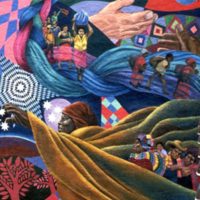
Sanctuary: the Spirit of Harriet Tubman
In 1986, muralist David Fichter created a mural on the side of the Paul Robeson Theatre in Atlanta, Georgia. The mural was sponsored by the city of Atlanta, and depicts Harriet Tubman leading slaves to freedom via the Underground Railroad, against a quilted backdrop..
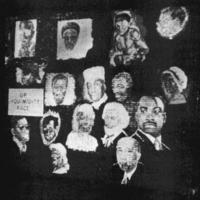
Wall of Respect/Up You Mighty Race
In 1968, after the success of Chicago’s Wall of Respect in 1967, muralist Leroy White painted Wall of Respect/Up You Mighty Race in St. Louis, Missouri. The mural was self-sponsored. After seeing Chicago’s Wall of Respect in Ebony, muralists in St. Louis were inspired to create public art in…
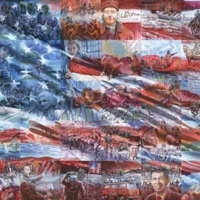
E Pluribus Unum
E Pluribus Unum, “Out of Many, One,” was a mural created by Lewis Lavoie in 2012. Described as a snapshot of America, the mural brings together 50 different stories from American history, celebrating a diverse past. Located in South Jordan City’s central City Hall building, the mural is a…
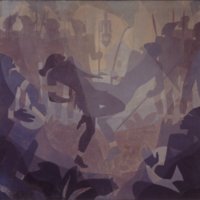
Aspects of Negro Life
Two years prior to the Texas Centennial Exposition, Aaron Douglas created a four-part mural series titled Aspects of Negro Life, to be housed in the 135th Street branch of the New York Public Library, the Schomburg Center. The various panels portray black history from slavery through to present. The…
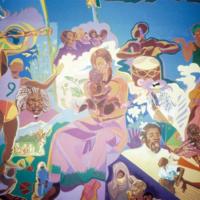
Races of the Student Population
In 1976, the Mexican muralist Manuel Martinez created a mural at Auraria College titled Races of the Student Population. It depicts the antislavery leader Frederick Douglass alongside figures of the Black Power Movement including Bobby Seale, and figures and symbols of the African diaspora.
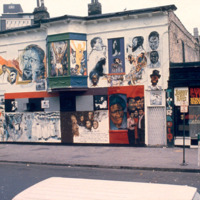
Wall of Respect
The Wall of Respect was the first exterior African American mural in the United States. Painted by OBAC (Organisation of Black American Culture), it underwent three main phases, as shown throughout the photographs here. Its creation was an inclusive process, asking local residents to decide which…
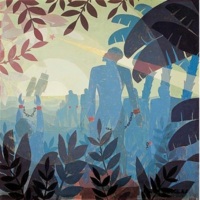
Into Bondage
In spring 1936, as part of the “healing process of the nation” during the aftermath of the Great Depression, President Franklin D. Roosevelt approved the Texas Centennial Exposition in Dallas. Although African Americans took part in the exhibition, their designated section of the fair was in the…
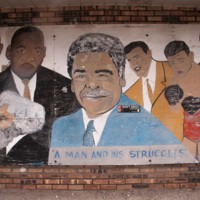
A Man and His Struggles
Titled A Man and His Struggles, this mural by Magic Fingers is in the Oak Park area of Chicago and depicts the first African American mayor of the city, Harold Washington, alongside Martin Luther King Jr., Jesse Jackson, and the antislavery leader Frederick Douglass. In 2016, artists updated the…
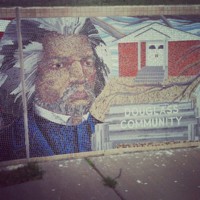
Tracks of Our Past and Future
In Plano, Texas, artists Lynne Chinn and Shug Jones created a mosaic mural titled Tracks of Our Past and Future. Made in 2006, the mural is 75 feet long and celebrates the African American community of Plano, Texas. At the centre of the mural is the antislavery leader Frederick Douglass.
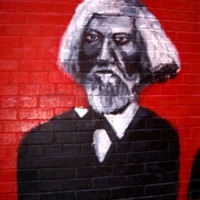
Paintin' the Town
In 1997, a muralist working for the Old Town Development Board completed a mural called Paintin’ the Town on North Loudoun Street in Winchester, Virginia. It includes a depiction of Douglass during the later period of his life. It had now been destroyed.
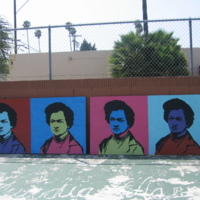
Frederick Douglass Academy Elementary School Mural
In 2014, muralist Maryanna Donnelly created this pop art style mural at the Frederick Douglass Academy Elementary School in Los Angeles.
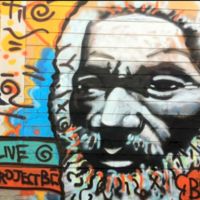
#projectbe / Exhibit BE
Brandan Odums’ murals are unusual because they tend to be off-limits to the public. One of the few muralists to reclaim dilapidated and abandoned building spaces as canvasses after Hurricane Katrina, Odums created a series of graffiti murals that aimed to inspire and provoke audiences. Although…
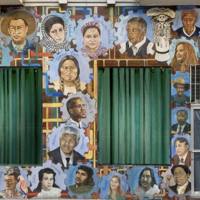
La L.ucha Continua/The Struggle Continues
This mural was painted on 3260 23rd St, between Mission and Capp Streets, in San Francisco by Susan Caruso Green, and was a community collaboration between muralists and local residents. It brings together faces from global history who have fought for civil rights, including the antislavery…
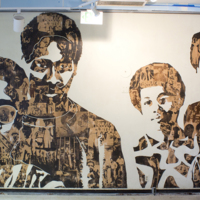
The Black Experience
In 1970, a group of seven black UCLA art students created a mural titled The Black Experience on the first floor of the Ackerman Student Union building. The mural, which measures 10 feet by 27 feet, was obscured for 20 years by a false wall erected in front of it during building renovations in 1992.…
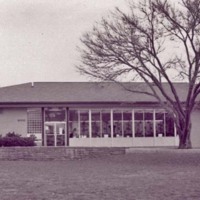
Odom Branch Library Mural
Woodrow Nash created a mural for the Odom Branch Library in the 1970s, depicting the antislavery leader Frederick Douglass alongside Martin Luther King Jr. and Malcolm X. In 1999, the library was remodelled and expanded to around 12,000 square feet. With the expansion came two new murals about black…
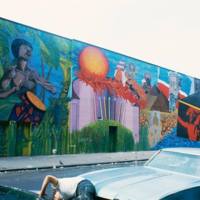
Afro Latin Coalition (Ghetto Ecstasy)
In 1973, Cityarts Workshop muralist James Jannuzzi painted a mural in New York City about Puerto Rican abolition, gang culture and black heritage. The mural includes a shirtless, muscular figure playing drums in a tropical landscape, Nubian symbols such as the ankh next to pyramids, and Ramón…
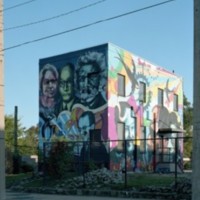
Seven Hills School Mural
Ed Trask, a Richmond-based muralist, created this mural in 2011 at the Seven Hills School in Richmond. It depicts the antislavery leader Frederick Douglass, as well as local figures Maggie Walker, Oliver W. Hill and Spottswood Robinson III. The other side of the building depicts Langston Hughes and…
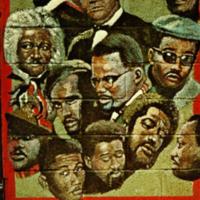
Nation of Islam
In 1990, this mural titled Nation of Islam at Charles Place in Brooklyn was created. The mural unites many radical figures of black history, including the antislavery leader Frederick Douglass, W.E.B. Du Bois, Elijah Muhammad, H. Rap Brown, Malcolm X, Marcus Garvey, Eldridge Cleaver and Bobby…
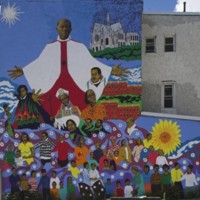
Father Paul Washington
Walter Edmonds memorialised Father Paul Washington of the Philadelphia Church of the Advocate, on the side of a building in the Strawberry Mansion district of Philadelphia in 1990. Father Washington was a prominent social activist in the area of Philadelphia.The creation of this mural is a good…
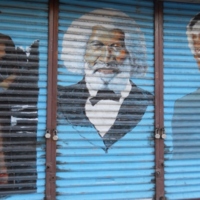
Tubman, Douglass, Mandela
This mural was created in 2008 by an unknown artist. Painted on a storefront on Ralph Avenue in Brooklyn, it depicted Harriet Tubman, Frederick Douglass and Nelson Mandela. As of 2014, it no longer existed.